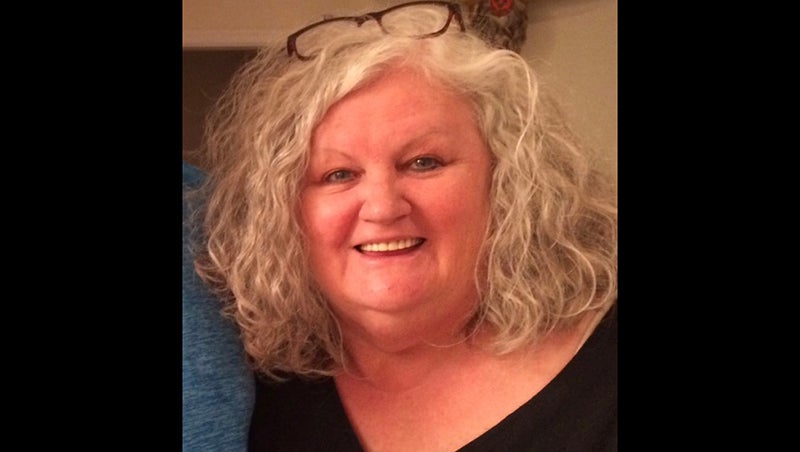The Nature Corner: What is it like to work on a national wildlife refuge?
Published 10:21 am Monday, April 19, 2021

- Wendy Stanton on the job. Courtesy photo
|
Getting your Trinity Audio player ready...
|
By Ernie Marshall
An interview with Wendy Stanton.
Q: I know you have had years of experience with National Wildlife Refuges, but are presently both acting manager at Pocosin Lakes NWR and Biologist at Mattamuskeet, Swan Quarter and Cedar Island NWRs. That must be quite a lot of responsibilities. What are your biggest challenges?
A: My biggest challenges include invasive species management and in particular setting back phragmites, alligator weed and sesbania on the refuges. In Lake Mattamuskeet, removing invasive common carp is also at the top of the list. Other challenges including prioritizing time and limited resources on the most important priorities that will provide the greatest benefits to service trust species.
Q: What sort of education is required to be a wildlife biologist?
A: At least a B.S. degree in wildlife biology, but a person is more competitive with a M.S. or even a PhD in wildlife biology.
Q: What kind of work do folks in that field do?
A: Wildlife biologists are responsible for the biological programs on the refuges. For me, some of the projects include integrated waterbird management and monitoring, habitat management and monitoring and evaluating the effectiveness of actions in terms of vegetation response and wildlife response, water quality monitoring and assisting other programs with technical expertise. I also collaborate with many partners to work together on common goals and challenges. This has been instrumental with the Lake Mattamuskeet Watershed Restoration Plan and ongoing work at Pocosin Lakes NWR.
Q: Would you recommend it to young people today?
A: Absolutely! This is my dream job. I am so grateful to work with an amazing group of people within the service, partnering agencies, researchers, volunteers and interns. I am continually inspired by their dedication and innovation to further conservation goals and projects together. Of course, one of my all-time favorite volunteers is Ernie Marshall! In addition, I fully believe in the mission of the USFWS which is working with others to conserve, protect and enhance fish, wildlife and plants and their habitats for the continuing benefit of the American people.
Q: You and your husband John are both in the field of wildlife biology. I bet that is rewarding to be able to share that experience. Does it make your work even more rewarding?
A: Yes, it is very rewarding. John and I love to work together on projects and bounce ideas off each other. We have a lot in common. John and I met in grad school at NCSU.
Q: Can you tell a bit about your typical day on a refuge?
A: I usually conduct my field work in the morning. This could include monitoring water quality in the lake and canals, conducting a waterbird survey (usually waterfowl) or vegetation surveys. The afternoons are reserved for data entry, reports, permits, compliance documents and virtual meetings.
Q: What are some of your interests you pursue, when you have time for them?
A: When I’m not working, I spend time with family. In addition, we have three very spoiled Irish wolfhounds, and John and I love to fish, hike, kayak, travel and just being in the outdoors.
Q: Can you sum up the value of National Wildlife Refuges for eastern North Carolina and the world?
A: The National Wildlife Refuges in eastern NC are national treasures. The ecosystems on these refuges are very diverse and include ocean beaches, brackish marsh, freshwater marsh, lakes, peatlands, pocosins and brown water bottomland hardwoods. The ecology is fascinating and even after working as a biologist more than 29 years, I am still learning new things. The wildlife, especially the wintering migratory waterfowl is spectacular to see during the winter months. However, anytime of the year is a special time to visit the refuges. They are teaming with wildlife all year round. There are many opportunities for people to enjoy nature and the outdoors in general with guided tours or on their own. This is where wildlife comes first, and these refuges are managed and protected for the benefit of present and future generations of Americans.
Ernie Marshall taught at East Carolina College for thirty-two years and had a home in Hyde County near Swan Quarter. He has done extensive volunteer work at the Mattamuskeet, Pocosin Lakes and Swan Quarter refuges and was chief script writer for wildlife documentaries by STRS Productions on the coastal U.S. National Wildlife Refuges, mostly located on the Outer Banks. Questions or comments? Contact the author at marshalle1922@gmail.com.
FOR MORE COLUMNS AND LETTERS TO THE EDITOR, CHECK OUT OUR OPINION SECTION HERE.





